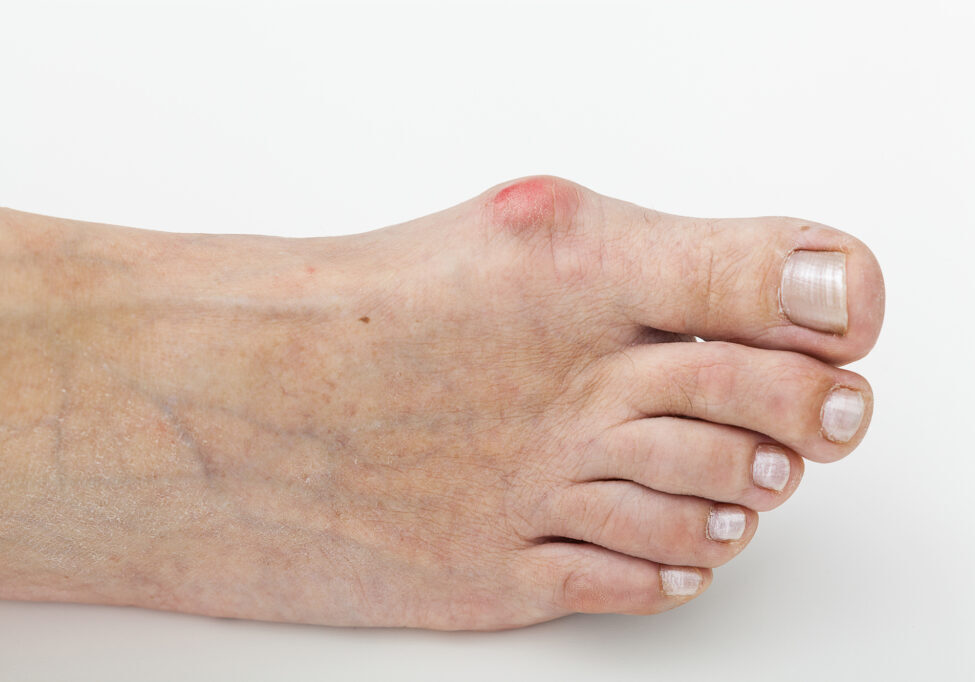Bunions
Bunions are often characterized by a bony bump that forms on the joint along the base of your big toe. It is often painful and can be life-impacting if left unchecked and allowed to progress. It is more formally called a deformity of the metatarsophalangeal MTP joint.
Causes and Common Risk Factors
As with many foot related conditions, bunions form in early adulthood, although they can also affect adolescent individuals as well. Bunions can be the result of genetics or heredity, or can form due to poor or weak foot structure. Arthritis is also a factor in the development of this often painful condition. Frequently wearing improperly fitting shoes that are too tight, pointed or crowded, such as high heels, can also increase your risk of developing bunions because the shoes force the toes into each other.
Symptoms of Bunions
- Soreness, redness or swelling around the big toe joint.
- A bulge or bump near the base of the big toe.
- Pain in the area, either chronic or that comes and goes.
- Calluses or corns near the second toe which forms because a bunion is now forcing the first and second toe to rub against each other.
- Reduced or limited movement in the big toe.

When to See a Doctor For Bunions
Although bunions are not a dangerous foot condition, they do merit attention from a foot doctor or even bunion surgery if the following is occurring:
- There is chronic foot pain associated with the problem.
- There is a visible bump on the big toe joint.
- It’s becoming hard to find shoes that fit you properly or comfortably because of your bunion.
- You cannot move your big toe as you should because of the bunion or bunion pain.
What Can Happen if You Just Let it Go?
As previously mentioned, bunions alone aren’t often cause for alarm, except when they become painful and begin affecting your life. However, this relatively harmless condition can lead to some more severe foot problems. These following are all possible complications of bunions:
- Metatarsalgia: This is a painful condition that causes pain and swelling around the ball of your foot.
- Hammer Toe: This condition causes the middle joint of your toe to bend abnormally. It’s often the toe situated right next to your big toe. This can result in uncomfortable pressure and pain.
- Bursitis: This painful condition occurs when the pads that cushion the joints and bones with fluid become inflamed.
Bottom Line
Although there is no need to panic if you have a bunion, there is also no reason to ignore the condition completely. After all, if left alone, bunions can advance into other more severe conditions. Schedule an appointment today if you’re concerned about bunion pain.
